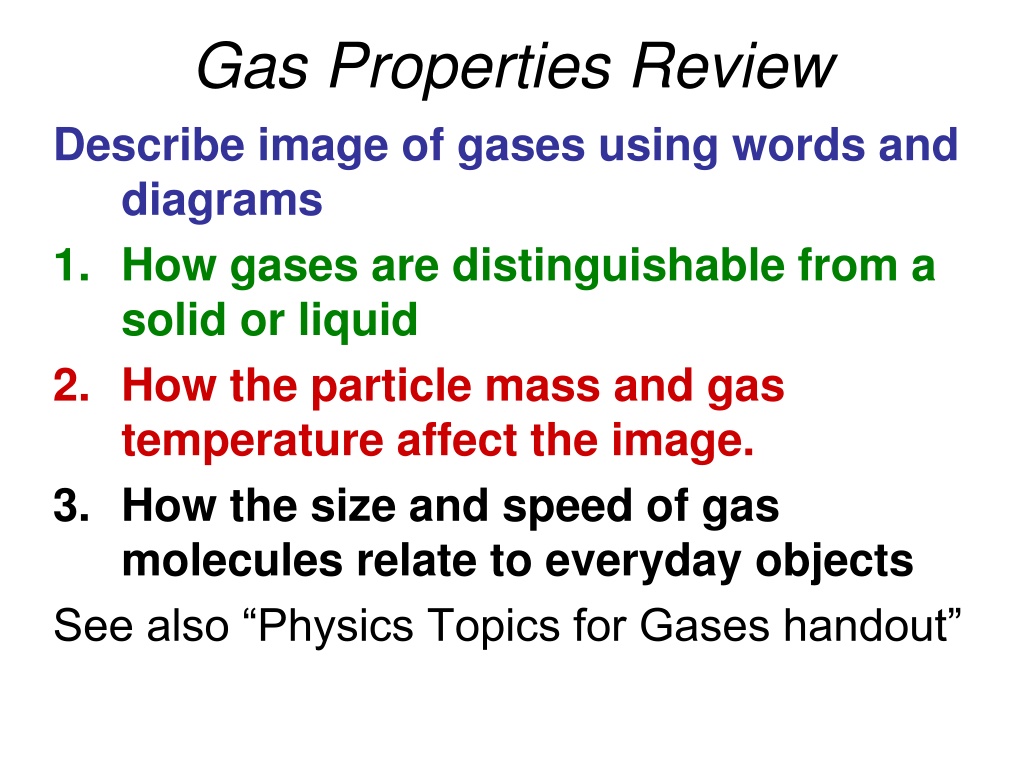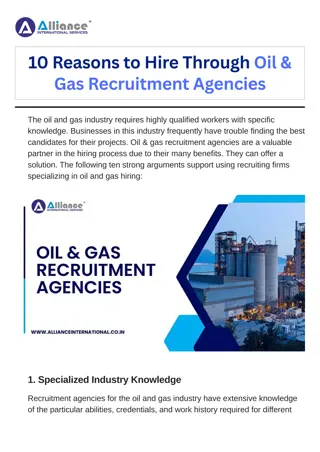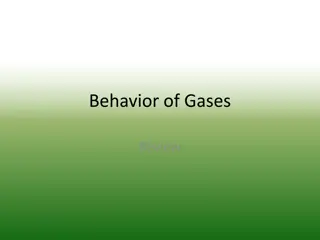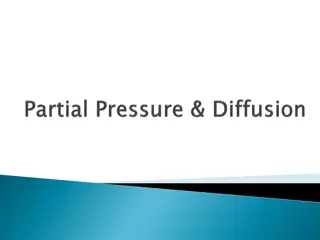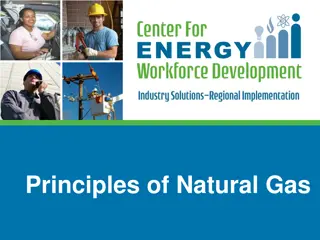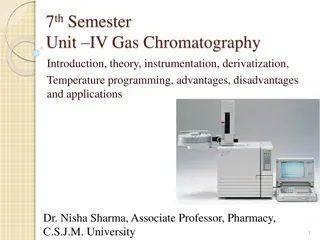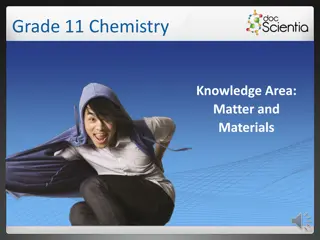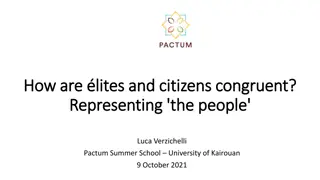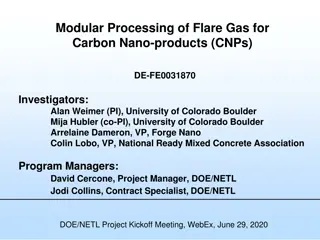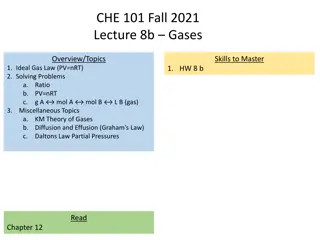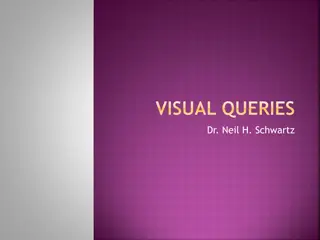Understanding Gas Properties Through Visual Representation
Explore the characteristics of gases through illustrations and diagrams. Learn how gases differ from solids and liquids, and understand the effects of particle mass and temperature on gas behavior. Discover the relationship between the size and speed of gas molecules in comparison to everyday objects.
Download Presentation

Please find below an Image/Link to download the presentation.
The content on the website is provided AS IS for your information and personal use only. It may not be sold, licensed, or shared on other websites without obtaining consent from the author. Download presentation by click this link. If you encounter any issues during the download, it is possible that the publisher has removed the file from their server.
E N D
Presentation Transcript
Gas Properties Review Describe image of gases using words and diagrams 1. How gases are distinguishable from a solid or liquid 2. How the particle mass and gas temperature affect the image. 3. How the size and speed of gas molecules relate to everyday objects See also Physics Topics for Gases handout
Gas Properties: Understanding gas model Goals: Describe a molecular model of gas pressure.
1. There are 2 balloons in a room. They are identical in size and material. One balloon is filled with air and the other balloon is filled with Helium. How does the pressure of the air balloon compare to the pressure of the Helium balloon. The pressure in the air balloon is A. less B. equal C. greater
For expandable container, set pressure constant answer
2. How does the pressure in the Helium balloon compare to the pressure of the air in the room? The pressure in the Helium balloon is A. less B. equal C. greater
3. How do the number of air molecules in the air balloon compare to the number of He atoms in Helium balloon? The number of air molecules is A. less B. equal C. greater
For expandable container, set pressure constant answer
4. How does the average speed of the Helium molecules compare to that of the air molecules? The average speed of the He molecules is A. less B. equal C. greater
Look at the animation of the particles bouncing around in the volume. Describe what visual information you can use to get a sense of the pressure that the gas particles are exerting on the walls.
Why does the pressure reading vary with time? What visual cues are associated with an increase in pressure?
5. What will happen to the pressure if temp is held constant and the volume is decreased? A. Pressure goes up because more collisions B. Pressure goes up because more collisions are happening, but same force per collision C. Pressure goes up because more collisions are happening, and increased force per collision D. Nothing because pressure is only related to molecular speed
The next slides follow the activity
Understanding physical change of gases continues Learning Goals: Describe a molecular model ofgas pressure Describe what happens to the measurable quantities if changes to the gas system are made. Make sense of the measurable quantities of gases by analyzing examples of macroscopic things that are similar Explain using physics what is happening on a molecular level when changes are made to a gas system.
6. You are flying from Denver to Boston, and you bring along a full bottle of shampoo that was well sealed before you left Denver. You land in Boston and proceed to your hotel. The number of air molecules within the shampoo bottle: A. has decreased B. has stayed the same C. has increased
7. If the walls of the shampoo bottle are strong and rigid so that the bottle has the same shape as before you left, how does the pressure of the air inside the bottle compare to the pressure of the air in Denver? A. less than B. equal to C. greater than
8. How does the pressure inside the bottle compare to the pressure of the air in Boston? A. less than B. equal to C. greater than
9. If you had a water bottle with very soft sides. When you open your suitcase in Boston, the bottle would look A. squished B. same size C. puffed out
What effects pressure for ideal gases? Temperature Number of particles Volume Mass of particles doesn t effect pressure (Avogadro s Principle)
People who climb the tallest mountains in the world often use oxygen tanks to help them breathe. If a mountain climber asked you to explain the physics behind the thin air , what would you say to him?
Gravity concentrates air closer to sea level
If you are in a building fire, you are supposed to lie on the ground. Why?
If you are hiking in the mountains and find yourself short of breath, do you think if you lie on the ground you could breathe easier?
